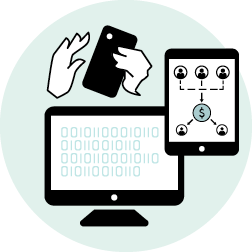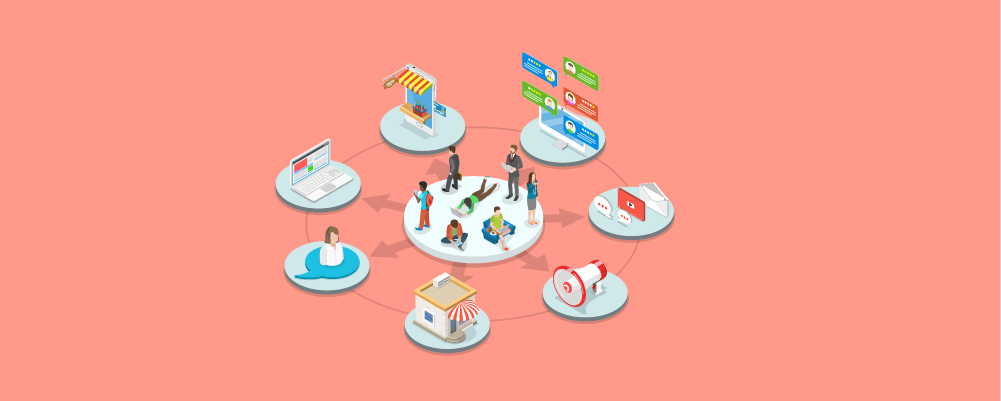It seems that every business topic these days—almost any topic, really—is framed in terms of the global pandemic. Businesses that are solving problems today are likely doing so in light of the pandemic. For example, food wholesalers have experienced a decline in demand while healthcare wholesalers saw a spike in demand. No doubt, both industries experienced subsequent demand issues—both problems brought about by the economic consequences of COVID-19.
However, in the case of wholesalers and distributors, another issue began to surface before COVID-19 and will continue to require attention after the pandemic subsides: the need for a digital presence to better meet the expectations of today’s buyers. This omnichannel approach will serve their businesses more effectively.
Opportunity Lies in Digital for Wholesalers and Distributors
Consumers who are doing their personal shopping online in increasing numbers are purchasing for businesses, too. And many businesses aren’t meeting their high expectations: for example, some 60 percent of B2B sellers still don’t have a website. As for wholesalers and distributors specifically, 53 percent of all distributor sales are still done manually by paper, fax, email, and phone. That means there is an enormous sales opportunity for wholesalers and distributors who grow their digital commerce capabilities, according to data and analysis in the 2020 Distributor 300 research report.
The pandemic didn’t create this gap, but it is highlighting it and potentially accelerating a shift to digital commerce for wholesalers and distributors. Total manual distributor sales will drop by a projected 16.9 percent in 2020, according to the report, and the main reason for that is COVID-19. The coronavirus is changing the behavior of business buyers, and they, like retail consumers, are looking for more digital commerce options.
Meeting Customer Needs, Trimming Costs, and Keeping Up with Competitors
Considering trends before and during the pandemic, and what they mean for the “next normal,” wholesalers and distributors need to invest more to really develop their digital presence. Those who have adopted digital and, at a minimum, already have a website can think about leveling up to true omnichannel commerce. Why is this important?
- Customers are used to omnichannel purchasing. According to Harvard Business Review, 73 percent of all customers use multiple channels during their retail purchase journey. Wholesalers can provide the same kind of seamless experience customers appreciate whether they are shopping online from a mobile device or a laptop or in a brick-and-mortar store. This includes enhanced fulfillment capabilities and inventory visibility, which have become part of B2B buyer expectations, a Forrester report
- Providing a comprehensive omnichannel experience helps ensure customer loyalty. Aberdeen Group Inc. finds that companies with strong omnichannel customer engagement strategies retain an average of 89 percent of their customers, compared with 33 percent for companies with weak omnichannel strategies. When competitors are just a click away, customer loyalty is critical.
- Digital technology can help trim costs. This can position wholesalers and distributors for sales growth and profitability post-pandemic, an Industrial Distribution article
- Omnichannel commerce helps B2B sellers keep up with – and surpass – competitors. Embracing an omnichannel model might not necessarily be easy or inexpensive, but it’s a shift that will continue, and B2B sellers will fall behind if they fail to adapt their technology to buyer needs and demands, Forrester says. “For those B2B businesses that do it well, omnichannel can represent a powerful competitive advantage. For example, rich omnichannel experiences, such as the ability to buy online and do next-day pickup or ship from a local facility, are difficult and expensive for pure-play Internet players to match.”
An omnichannel experience might not be necessary for all wholesalers and distributors. For example, scale is important. “The platforms that work best are those that serve verticals tied to products that everybody needs—as might be seen in grocery retailing, for example, and bulk goods, where price competition is a hallmark,” says a PYMNTS.com article on buyer/supplier dynamics. “But as soon as buying groups desire to purchase a diverse group of products—some of which may be specific to certain regions or consumers—the scale advantage disappears.”
But for those who can benefit from omnichannel, technology that creates frictionless, consistent customer experiences across all sales channels and borders, anytime, anyplace and from any device is critical. That’s where the value of bundled omnichannel commerce technology from a single provider comes into play. There’s no need to piece together offerings, learn multiple systems, deal with different vendors, or consolidate disparate data. Channels, customers, and payments are connected seamlessly.
In a world that will continue to rely more and more on omnichannel commerce, wholesalers and distributors do themselves a disservice if they don’t focus more time and effort on their digital and fulfillment capabilities and overall customer experience–pandemic or not.
Start bringing Money INTM fast and easy with our wide range of payment acceptance products.




